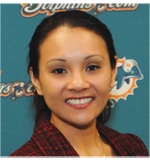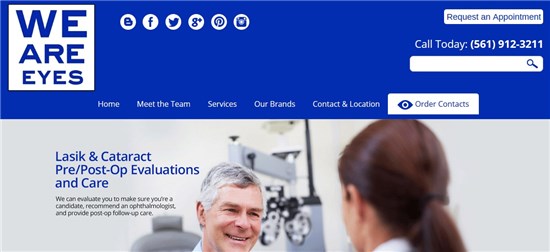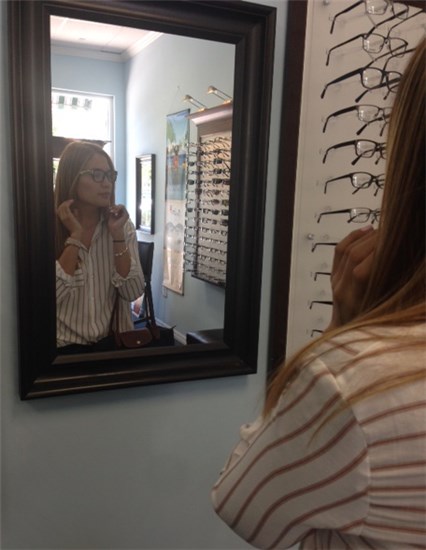By Thuy-Lan Nguyen, OD
May 18, 2016
SYNOPSIS
Your practice may run efficiently for you and your staff, but is it friendly to your patients? To build loyalty, make it super-easy for patients to schedule appointments, learn about eye health, and have an enjoyable and relaxing experience at your office.
ACTION POINTS
SIMPLIFY WEB SITE. Show what you do by displaying your services. Make it easy to do the #1 task: make an appointment.
BE THE DEFINITIVE EYECARE RESOURCE. Tell patients what they will encounter during your visit–and why it’s important to their eye health and vision.
BE PATIENT-FRIENDLY. Enable patients to save time by filling out paperwork ahead of their visit, and to have less work and shorter wait times before appointments.
Retaining patients is essential to practice success, and the key to this is to provide memorable patient experiences that build loyalty to you and your practice. You need to devise a plan, train and retrain your staff–and make it an ingrained office process. The two-doctor, four-employee practice where I’m now a part-time associate, We Are Eyes, in Boca Raton, Fla., prides itself on doing just that.
Creating an office experience means providing unique things to your patients that they will remember more than any specific service received, or product purchased. It’s the details that will make a patient feel good about their visit to an office, like whether they were greeted with a smile at the door, whether they were educated by staff, whether they were seen promptly by the doctor, and whether they found their overall time in the office comfortable.
In addition to increasing the likelihood that patients will return for another visit, a satisfying office experience also can result in favorable online reviews.

The web site ofWe Are Eyes in Boca Raton, Fla., where Dr. Nguyen is a part-time associate. Dr. Nguyen says the site gives visitors a preview of the experience they’ll have in the office by creating as much convenience and ease as possible. Visitors can easily make an appointment on the site and order contact lenses.
Review
Make YourPractice Web Site Easy to Use
Your practice web site often is the first touch point a patient has with your practice. It must be engaging and informative
Patients should be able to see pictures and get to know a practice before they step foot inside. A web site should be interactive and allow a patient to request an appointment, or ask a question online. A web site should also direct patients to the practice’s social media sites, so they can read online reviews from other patients’ experiences.
Ensure Positive Phone Interactions
The second experience a patient has with your office is typically over the phone. Therefore, your staff should have scripts for every possible type of call to ensure the right messages are communicated. No matter why the patient is calling, I like my staff to say: “No problem, I can help you with that.” And once the patient comes in, recognition is critical.
My practice tries to greet each patient by name. Receptionists should anticipate who might be walking into the office next based on the appointment schedule. Make eye contact and smile to every patient. Patients are greeted with either: “Good morning, are you Mr. Smith?” or “Welcome back, Mr. Smith, it’s nice to see you again.” For a patient, it’s flattering to know that a business knows who they are, making them more excited to begin the office experience.

The long mirrors in Dr. Nguyen’s practice allow people to view how their new glasses will look with their overall style. Dr. Nguyen says these kinds of thoughtful touches send a message to patients that the practice understands their needs.
Be the Information Source
Patient education is essential in creating an office experience. This differentiates you from high-volume, price-driven providers.
Throughout the examination, I try to have conversations with the patient. Even though I might be doing the same procedures over and over again for multiple patients, I try to remember that each patient is an individual. Patient education should be personal. At the end of each exam, I put my pen down, turn away from the computer, turn the lights up and look at my patient to talk to them. I spend a little time explaining even the simple things such as what myopia or astigmatism is.
I met a doctor recently who sends all his patients an e-mail at the end of the day from a personal e-mail account to say thank you for the visit. I started doing it for some patients, and it’s so easy, I may increase the number of thank-you e-mails I send. I try to include something personal in each e-mail, but no matter what the diagnosis, if a patient seemed very inquisitive, I send them a link with more information.
Save the Patient Time and Effort
Little things count in your office environment because we all make judgements, often unconsciously. Is your office neat and clean? Are mirrors free of smudges? Are there loose holders in your frame board that fall off when a patient reaches for a frame.
Do an office walk-through regularly. Be a patient for a moment and see things from the patient perspective.
My office tries hard to minimize the amount of paperwork that a patient has to fill out. But it’s also important to keep all paperwork and packaging boxes out of sight. Patients should not see stacks of charts or file cabinets or clutter. I want my office to feel like the open Apple showroom instead of the warehouse floor of Best Buy.
Furniture and lighting should be dust-free and cleaned every day. In the optical, I like an open layout that is easy for a patient to get around and feel comfortable spending time trying on frames in. I recently discovered a frame display in my office where every time you touched one frame, nine others fell off. That display was removed immediately. Even mirrors in the optical should be considered. Many opticals have small tabletop mirrors at each station. I love large, or even full-length, mirrors in the optical. Patients love seeing how a particular style looks on their face, but it also affects their entire look from head to toe. Does that frame go with a lady’s bag and shoes? Will that frame enhance a patient’s overall image?
Use Tablets to Create a Fun Fashion Experience
Our world is becoming more mobile, so our practices should be mobile, as well. If a patient is trying on different styles, use an office iPad, or other tablet, to take a picture. Encourage opticians to take multiple pictures if patients are considering multiple styles. Offer to send the picture to the patient so they can post it to their social media to get instant opinions from friends and family. If a patient is looking for a particular frame style that is not available in office, consider using a tablet to show more colors or styles that are available. If they find a style they like, hand them the tablet and let them enlarge the image, or view it from different angles.
And since our patients are more mobile than ever, I recommend that practices offer free WiFi in the office. It may sound insignificant, but a 2014 survey by Hotels.com found WiFi to be the most desired in-room amenity. And even high-end hotels, where patients could easily afford WiFi, receive negative online reviews for not offering free WiFi. It’s often these small details, which a practice doesn’t think about, that can make or break the patient’s overall experience.
Communicate Enthusiasm to Patients
Patient expectations for the office experience are very different compared to 10 or 15 years ago. In the past, we all wanted to give patients the “wow” experience. My goal when I first started practicing was to have a patient tell me, “Wow doc, that was the best eye exam I’ve ever had!” While I strive to give a patient a proper examination, as the years went along, I started hearing, “Doc, you are a great doctor, but I’d like my prescription, so I can get my glasses somewhere else.” That is when I knew that the entire office needed to evolve.
Equipment and technology needs to be modernized, but the idea of customer service has changed, so practices have to change their mentality. For example, when a young patient is scared about wearing glasses for the first time, I have my entire office cheering, clapping hands and taking pictures. We celebrate each patient as much as possible to make them feel special.
Focus Staff Meetings on How to Enhance Patient Experience
In the past, many staff meetings were focused on new products or new treatments. It’s important to keep staff informed of new changes, so many of my staff meetings now are less product-driven and more about enhancing patient experiences. Staff meetings are a great way to motivate employees and keep them excited about the little things they do for patients every day. At a recent staff meeting, I read out loud a nice letter I got from a patient. She raved about an employee who helped her get to her car safely one dark rainy night. That employee was rewarded with a gift card and their picture was posted on all our social media sites for going above and beyond.
Think Patient Relaxation
For the future, I am considering offering a pleasant area for patients to sit and relax for a while if they are interested. I would love a massage chair with refreshments. And I’m seriously considering adding a charging station for mobile devices. We typically try to get patients in and out of the office as quickly as possible, but as part of the office experience, I’d like to allow some patients to linger and enjoy themselves.
Thuy-Lan Nguyen, OD, practices in South Florida, teaches at Nova Southeastern University College of Optometry, and works part time as an associate at We Are Eyes in Boca Raton, Fla. To contact her: TLNGUYEN@nova.edu





















